Text
An American Voice
Since the events of 2020, we have attempted to be more active and reach out to LSU Shreveport campus. This action of outreach is meant to help student, faculty, and campus personnel be aware of a rare and unique resource that is available to them, and any visiting persons to the campus. We have just started our 2024 J.S. Noel Collection Pop-up Exhibits, we aim to highlight a vary small section of the James Smith Noel Collection that might interest various research. This time we focused on one person, Paul Laurence Dunbar.


Paul Laurence Dunbar was born in June in 1872 after the United States’ Civil War, his parents were former slaves. He was born and raised in Dayton, Ohio; and started writing from a young age. He wrote is first poem at the age of 6 and read it aloud at the age of nine for a local church congregation, “An Easter Ode.” Dunbar was 16 when he published two poems in the Dayton’s newspaper The Herald; “Our Martyred Soldiers” and “On the River” in 1888. A few years later he would write and edit Dayton’s first weekly African-American newspaper, The Tattler. Paul L. Dunbar worked with two brothers that were his high-school acquaintances to print the paper that lasted six weeks. Those brothers were Wilbur and Orville Wright, the fathers of American aviation. Dunbar was the only African-American student at Central High School in Dayton.
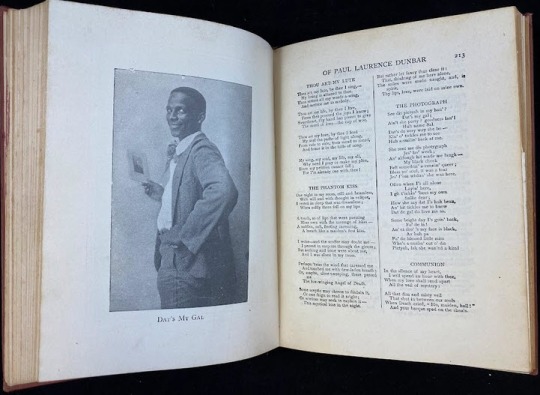
Dunbar’s parents had been slaves in Kentucky, following the emancipation, his mother moved to Ohio, and his father escaped before the Civil War ended. Joshua Dunbar went to Massachusetts and volunteered with the 55th Massachusetts Infantry Regiment. His parents, Matilda and Joshua, were married on Christmas Eve and Paul L. Dunbar arrived six months later. His parents had a troubled union, they separated after the birth on Paul’s sister; but his father would pass away in August in 1885 when Paul was only 13 years old. His mother played a key role in his education, she hoped her son would become a minister. He was elected president of his high school’s literary society which lead to him to become editor of the school newspaper and debate club member.
Paul Laurence Dunbar finished school in 1891 and took a job as an elevator operator to earn money for college where he hoped to study law. Dunbar had continued to write and soon a collection of poems he wanted to publish. He revisited the Wright brothers, but they no longer had a printing faculty and lead his to the United Brethren Publishing House in 1893. Oak and Ivy was soon published and he busied himself selling copies as he operated the elevator. The book contained two sections, Oak with its traditional verse; and Ivy was written in dialect.
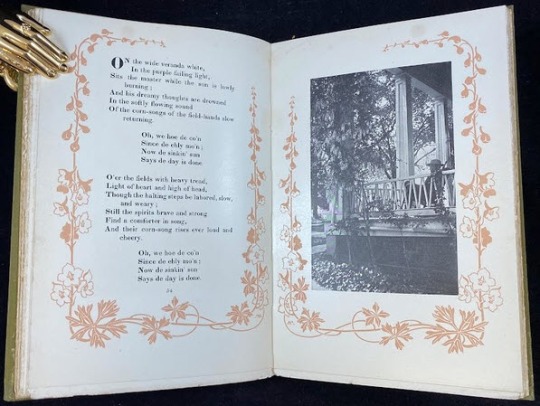
His literary talents were recognized and Attorney Charles A. Thatcher offered to pay for college; however, his interest in law had shift to his writing. Dunbar had been encouraged by the sell of his poetry, and Thatcher helped by arranging for Dunbar to do readings in a nearby city. Psychiatrist Henry A. Tobey also took an interest and assisted in distributing Dunbar’s first book. The two contained to support Dunbar through the publication of his second collection of verse, Major and Minors, in 1896. While he was consistent at publishing, he was a reckless spender resulting in debt. He was a traditional struggling artist as he tried to support himself and his mother.
There was hope in the summer of 1896 when his second book received a positive review in Harper’s Weekly, William Dean Howells brought national attention to his poems; calling them “honest thinking and true feeling” and praising his dialectic poems. There was a growing appreciation for folk culture and black dialect. His popular works were written in the “Negro dialect” that is commonly associated with the antebellum South; though he also wrote in the Midwestern dialect that he grew-up hearing. Dunbar would write in various styles, including conversational English in poetry and novels. He is considered to be the first important African American sonnet writer. His use of the “Black dialect” in writing has been criticized as pan-handling to readers.
Dunbar was a diverse writer, he experimented with poetry, short stories, novels, plays, and a musical. He even ventured beyond the lens of the lives of African Americans and attempted to explore the struggles of a white minister. The Uncalled, Dunbar’s first novel, held similar names and themes of Hawthorne’s The Scarlet Letter and was not well favored. It was with his venture into novel writing that he dared to cross the “color line” with his first novel which focused solely on white society. He continued to try to capture white culture but the critics found them lacking.
He moved past novel writing and began to work with two composers, Dunbar wrote the lyrics for the first musical that would be preformed by an all African-American cast on Broadway; In Dahomey. Beyond his writing career, Dunbar was also active the early civil rights movements happening in 1897. He married after a trip to the United Kingdom in 1898, Alice Ruth Moore was also a poet and teacher from New Orleans. She also published a collection of short stories, and they wrote companion poems together. There was a play in 2001 based on their relationship.
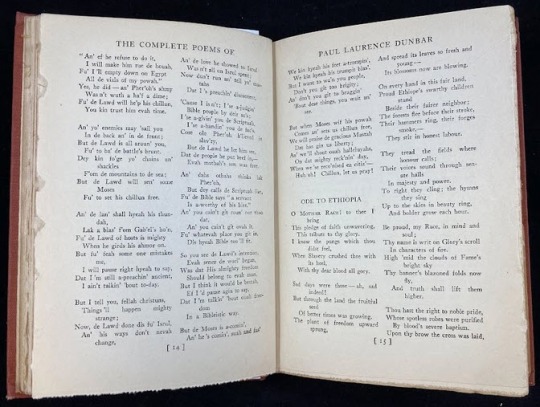
Dunbar had taken a traditional job with the Library of Congress in D.C. and with his wife in tow they moved there. However, with his wife’s urging, he left his job to focus on his writings and his public readings. This also allowed him to attend Howard University for a time. However, he was diagnosed with tuberculosis in 1900 and his doctors suggested that drinking whisky would alleviate the symptoms. They also moved to the cold dry mountains of Colorado for his health. This resulted in trouble in Paul and Alice’s marriage, they separated in 1902 but never formally divorced.
Dunbar returned to his hometown of Dayton, Ohio in 1904 to be with his mother, his health continued to decline and depression consumed his mind. Paul Laurence Dunbar died from tuberculosis at age 33 on February 9, 1906 and was interred in Dayton.
Dunbar did not become one of the forgotten poets of literature, his use of dialect in his poetry allowed for his works to remain relevant and important in poetic criticism. We of the James Smith Noel Collection at LSU Shreveport are proud to retain and maintain a small collection of his works and show case their importance.
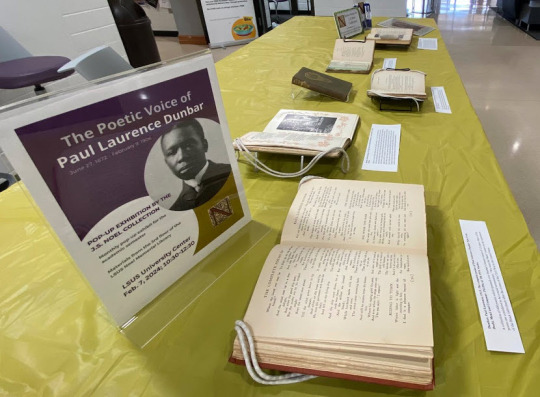
18 notes
·
View notes
Text
Blessed Feast! Happy Saint Nicholas Day!
We are familiar with the tradition of Father Christmas in some regards, the more common name is Santa Claus in the United States. How familiar are you with Saint Nicholas of Myra, the real person that would be known as Father Christmas/ Santa Claus? Did you know that his feast day is December 6th?
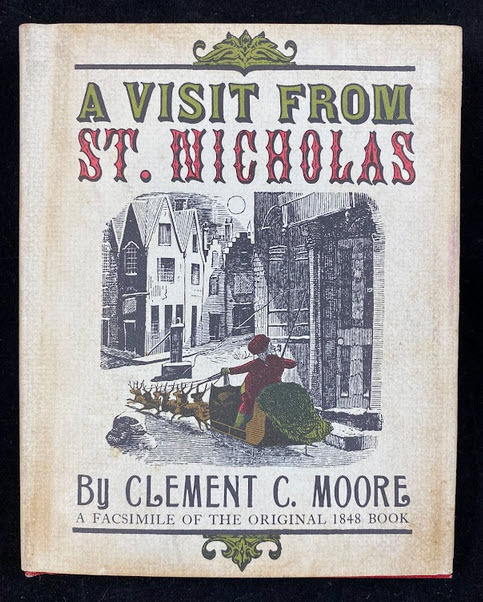


Saint Nicholas of Myra was of Greek descent and early Christian bishop, he became the Bishop of Constantinople. It was while he was Bishop that the first ecumenical council was held, also known as the First Council of Nicaea in 325. The discussion over the divinity of Christ became so heated that Saint Nicholas is reported to have physically struck a fellow priest, Arius, for heretical theology.
This is far different from the man we are familiar with as a Wonder-worker. He was known as a secret gift giver, and there is held the tradition of leaving out children’s shoes for Saint Nicholas to fill with tokens. It is said that he was born into a wealthy family, and after the death of his parents he gave up his wealth for his faith. Saint Nicholas is often attributed to children, this is because many of his miracles centered around children. One of his earliest incidents recorded was when he rescued three girls from being forced into prostitution by dropping bags of gold in their homes for their dowry. Other stories mention calming storms, saving soldiers from a wrongful execution, and destroying a demonic tree. It was after his pilgrimage to Egypt and Palestine that he became Bishop of Myra and was imprisoned by Diocletian but was released with the accession of Constantine.
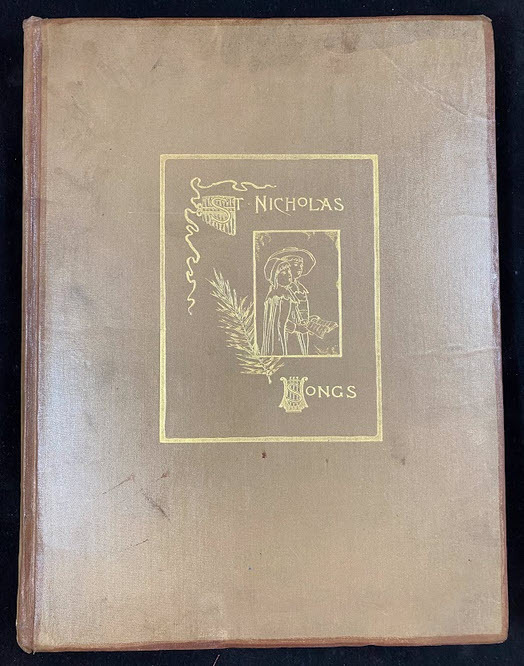

Saint Nicholas was best known for his generosity and kindness, especially to children and the poor. The action of leaving out shoes or placing out stocking is a long standing Christmas tradition to be filled by the patron saint of sailors. Saint Nicholas is venerated in Catholic, Orthodox, and Episcopal churches. However, the image of Saint Nicholas is recognized by many winter season traditions throughout Europe, America, and other parts of the world.
18 notes
·
View notes
Text
Book tour of Scotland
Scotland, a country of wonder and mystery. This is also the topic of our current exhibit for the reminder of the summer. Scotland has become a topic of pop-culture over the recent years, though it has always been an area of interest for travel, history, and adventure. While we cannot provide any resources for accessing magic time-traveling stones, we do have a small collection of men in kilts featured in this exhibit. Louisiana and much of the southern region of the United States has a strong Scottish heritage, there are several families with Scottish and Irish rooted names. In support of seeking family heritage, we have a small collection of Scottish clans in their tartan on display and a few books for those genealogical researchers to find their family’s possible tartan color.
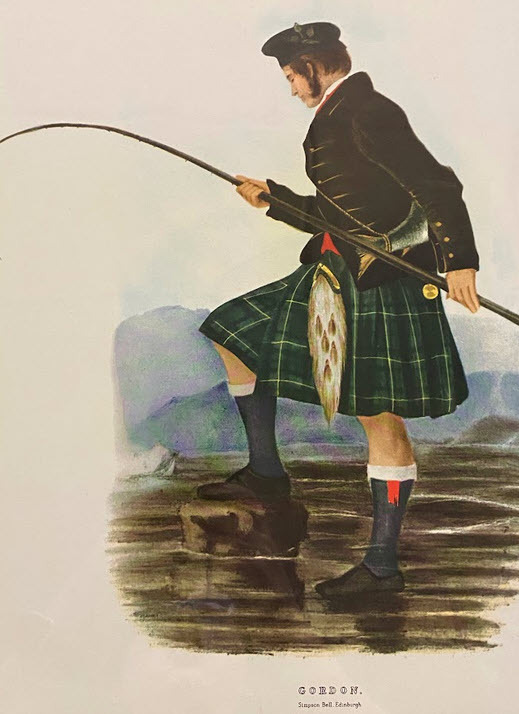
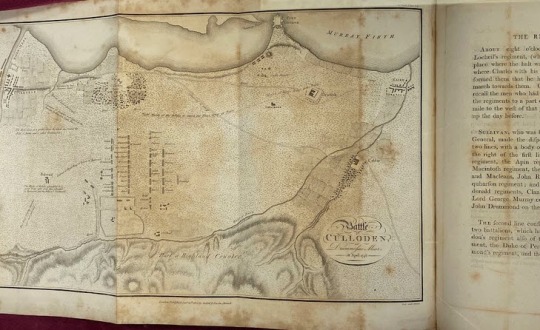

However, Scotland is more than names and weaving patterns. We also highlight Scottish literary works, though that would be an exhibit of its own but we proudly boast our copies of Sir Walter Scott and Robert Burns. And it is difficult to discuss any European literary history and tradition without including at least one book that discusses the influence of fairy-stories. The British Isles are rich with fairy-lore and their own folktale heritage. The book selected for its discussion of Scottish folklore heritage has not only a chapter on fairies but also on ghosts.


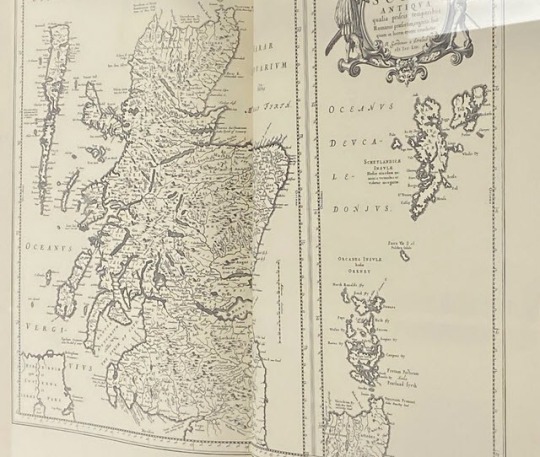
Scotland has had a haunting history of rebellion because of its desire to remain an independent country with its whole ruler and government. This is highlighted through the line of Stuarts and the last try for the Scottish crown by the ol’ Bonnie Prince. We do host quite the collection of materials regarding the Scottish rebellions and feature a text with an inlaid map of Culloden during the Rebellion of ’45. This was known as the shortest and most tragic battle for not only Scottish families but also the Jacobite rebellion. While the Jacobite rebellion made history, it is not the only famous location in Scotland. There are a great number of famous and historic locations in Scotland, not only because of its capital, Edinburgh, but also because it was one of the most well mapped areas of the 1600s.
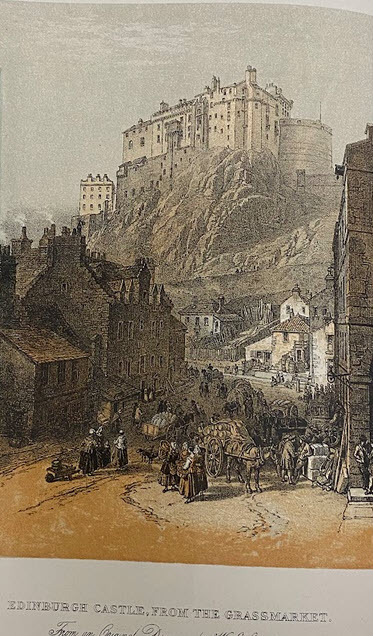
The diverse landscape makes the country a hot spot for hikers, sightseers, and general adventures. Scotland is also home to various species of wildlife and livestock, like the Highlander cattle and pony. It was the Highland pony that would lead to the development of the Clydesdale breed. The industries of academic, farming, and science based in Scotland have produced a strong economic infrastructure of the county.
48 notes
·
View notes
Text
King Charles I
While Northwest Louisiana, Northeast Texas, and many others dealt with a song of storms, the United Kingdom and those maintaining the tradition of the Commonwealth had a different type of celebration. June 17th was the monarch’s birthday; the English monarch has two birthdays. One is the day of their birthday and while the other is commonly known as the King’s Official Birthday which is celebrated by much of the Commonwealth. Countries like Australia, Belize, and Canada observe a day to honor the current English monarch. This has been a tradition since 1748 during the reign of King George II. The occasion has typically been observed in June and commonly the second Saturday in June. So as the celebration fades for the newly crowned King Charles III, we would like to honor the first King Charles of England.
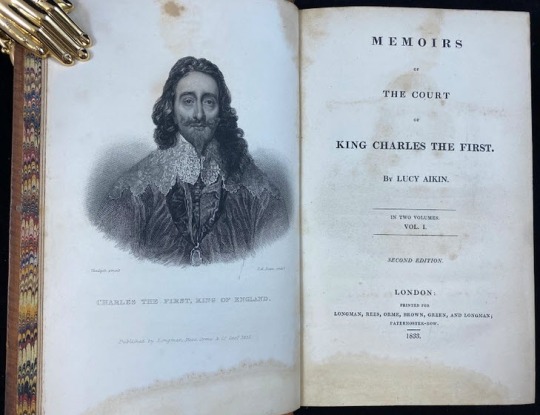
Charles the first of England, Scotland, and Ireland regained from March 27th of 1624 until 1649. This Charles was one of the doomed kings of England, there was a quarrel with English Parliaments regarding the divine right of kings and desired to govern by his own conscience. The second son of James VI of Scotland and became James I of England when succeeding Queen Elizabeth I. Charles II was not a healthy child and had a physical infirmity caused by rickets. During the reign of King Charles I there was the English Civil War which was between the English and Scottish Parliaments and resulted in the defeat of Charles. King Charles I would be tried and convicted of high treason in January of 1649. The treason was regarding Charles I being a constitutional monarchy. Charles I ruled for eleven years without a parliament, and in 1640 Parliament returned with the Bishop’s War but struggled against King Charles. England would be a Commonwealth in 1649. England returned to a monarchy in 1660 with the restoration of the throne to Charles II; the son of Charles the first.
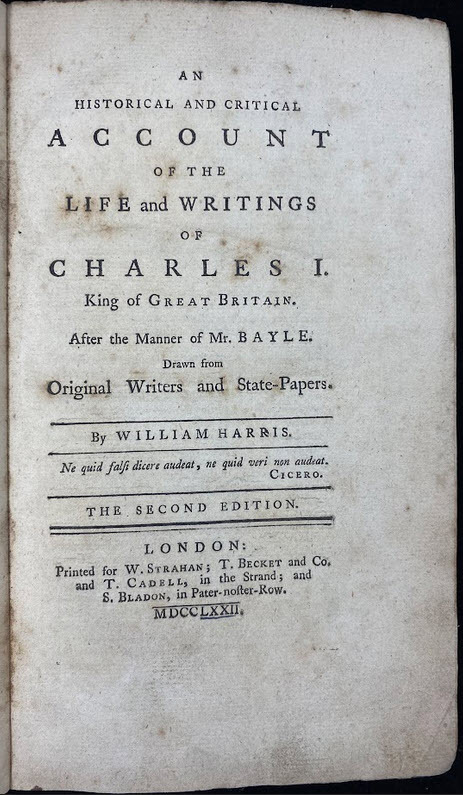

The James Smith Noel Collection holds several books that cover King Charles I of England which are shown throughout this post. There are four that were selected from the collection that discuss King Charles the first of England. The first is Memoirs of the Court of King Charles the First (https://bit.ly/42YNoN7) and we see a frontispiece of King Charles I. The next is An historical and critical account of the life and writings of Charles I. King of Great Britain … (bit.ly/3pjE4FL) that was published in 1772. This volume is open to a random section regarding the life of King Charles I. We also hold an 1899 publishing of The kings' lyrics : lyrical poems of the reigns of King James I and King Charles I (https://bit.ly/3NKPKef) and is open to selection of poems regarding Charles the first. The final text selected also includes an etched portrait of King Charles I; The high court of justice; comprising memoirs of the principal persons who sat in judgment on King Charles the First … (https://bit.ly/3PsUzKd) and is open to a copy is the trial edict of King Charles I.

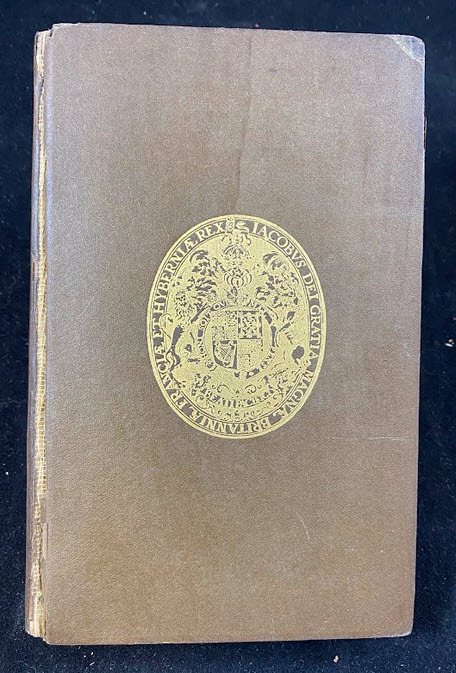
The kings named Charles have not had the greatest history. Charles II of Spain was known as the “Bewitched” which was caused by inbreeding. The son of Charles I of England, Charles II was overthrown by Oliver Cromwell, and he remained in exile in France until Cromwell’s death when he would return as an accepted King by parliament. We now live in the time of King Charles the third, who has quite a dramatic history before his coronation and follows after the longest reigning monarch, his mother Queen Elizabeth II.
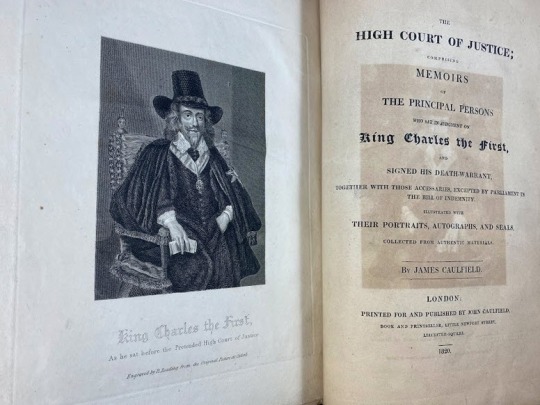

6 notes
·
View notes
Text

Check out this remarkable work of scholarship on Jewish burial customs!
The author, Johann Nicolai, was a Professor of Antiquities at the University of Tübingen in Tübingen, Germany. He went about 300 miles away to the Leiden-based academic printer Hendrik Teeringh to have his scholarship on “sepulchris hebraeorum” (lit. “On Jewish graves”) published. This book was no small feat. It is typographically complex with Roman, Italic, and Gothic fonts as well as Greek, Hebrew, Syrian, Coptic, and Arabic characters. Additionally, the work features delicate inline woodcut illustrations and metal plate engravings.
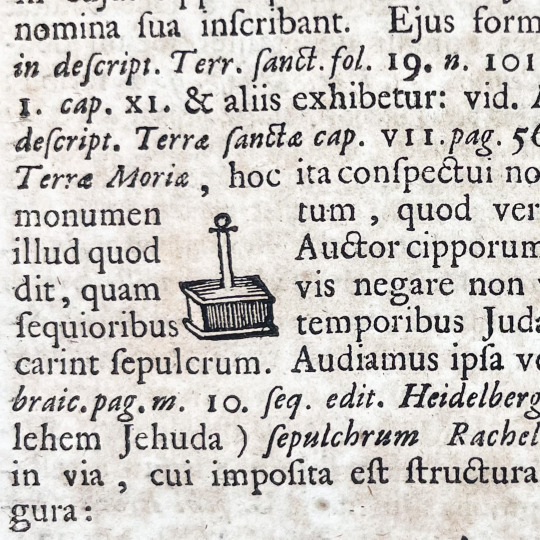
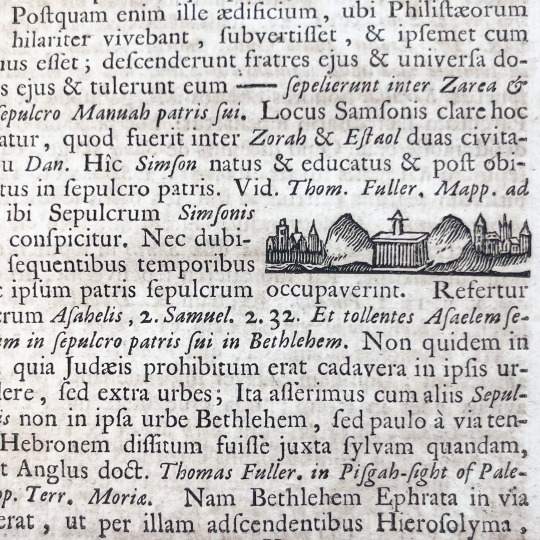
Examples of inline woodcut illustrations.
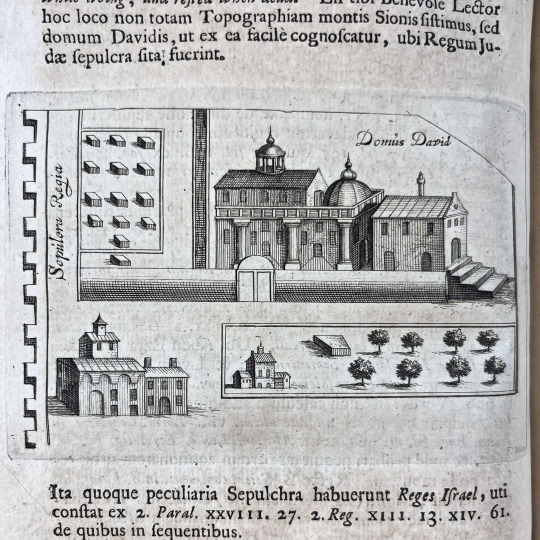
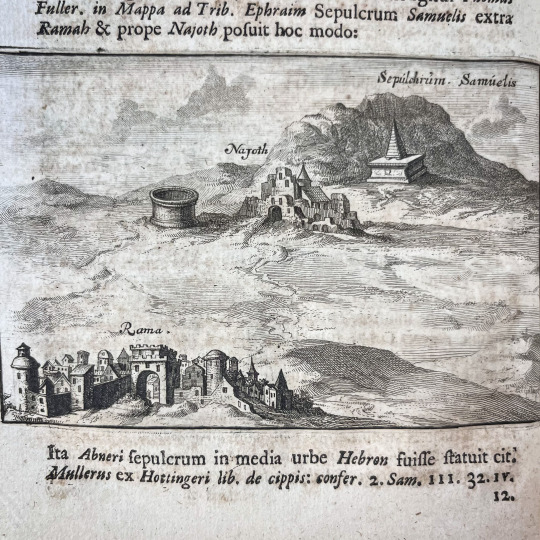
Engravings of the royal graveyard of the ancient kings of Judah and the tomb of the prophet Samuel.
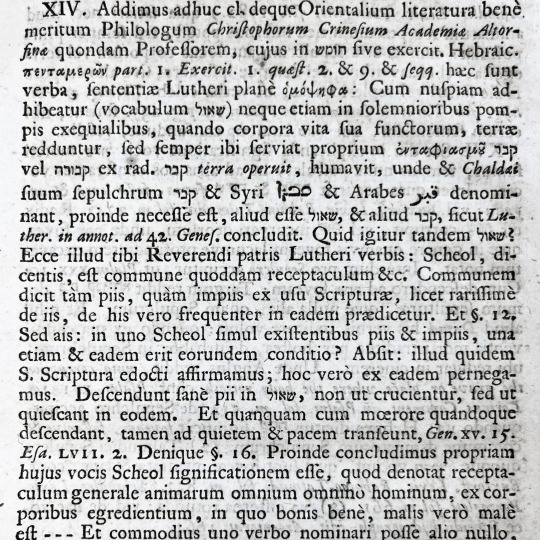
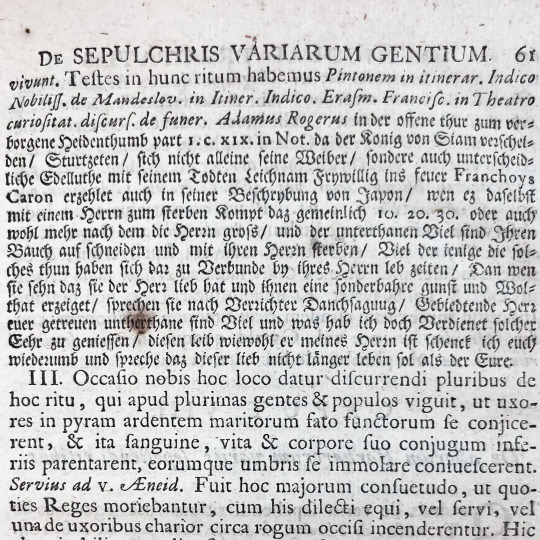
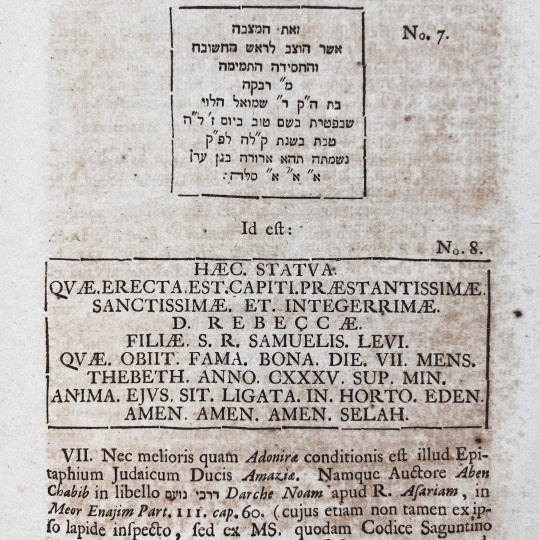
Sampling of the typographical variety found in this book.
Images from: Nicolai, Johann. Libri IV. De sepulchris hebraeorum. Leiden: Hendrik Teeringh, 1706. Catalog record: https://bit.ly/3qJ2QQ6
26 notes
·
View notes
Text
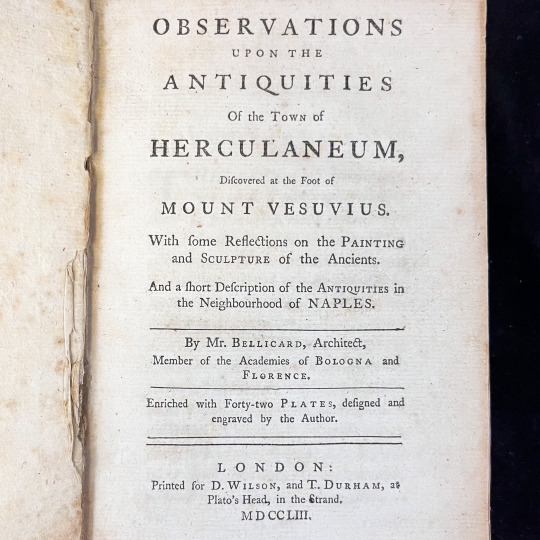
One of the highlights of the eighteenth century was the excavation of the cities buried in ash by the eruption of Mount Vesuvius in 79 A.D. French architect and engraver Jérôme Charles Bellicard explored one of these remarkably preserved cities, Herculaneum, in 1750. Bellicard published his findings and engraved illustrations four years later in Observations sur les antiquites de la ville d’Herculanum, the first illustrated account of archaeological findings at the site. The Noel Collection has an English edition of this fascinating early glimpse into ancient Roman art and architecture as modern-era excavators began brushing away and dislodging the volcanic ash that had preserved the city for 1,600 years. These discoveries inspired the Neoclassical revival in European art and architecture.
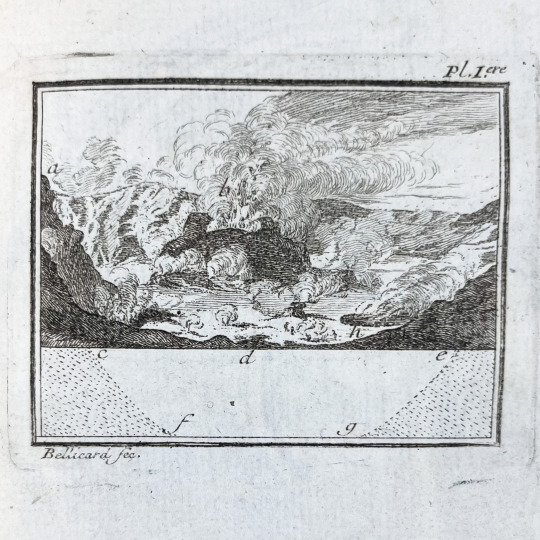
Bellicard’s illustration of Mt. Vesuvius as he observed it in 1750, accompanied by a diagram by which Bellicard explains the terrain and vents surrounding the volcano at the time.
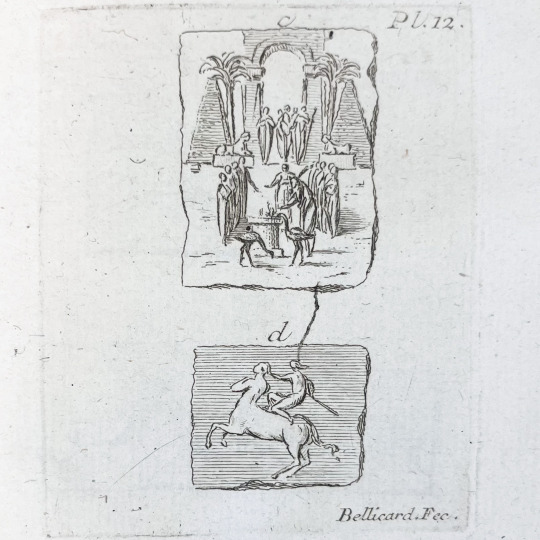
Sketches of preserved Roman paintings, including a scene of an Egyptian ritual sacrifice with a pair of ibises in the foreground (Figure C).
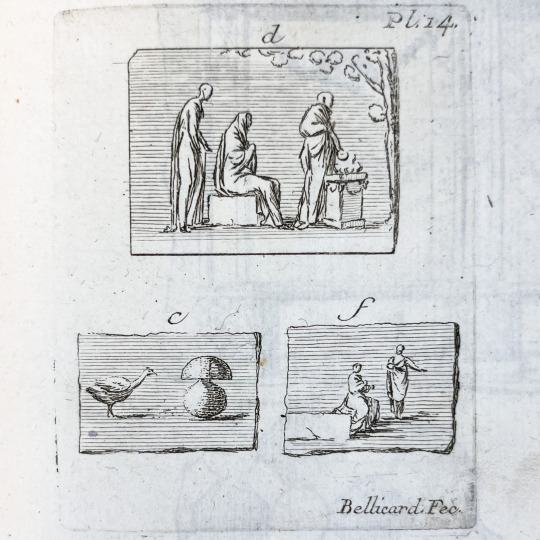
Three pieces of bas relief in marble. Bellicard was particularly impressed by the artistry of Figure D, which shows an old man offering libations.
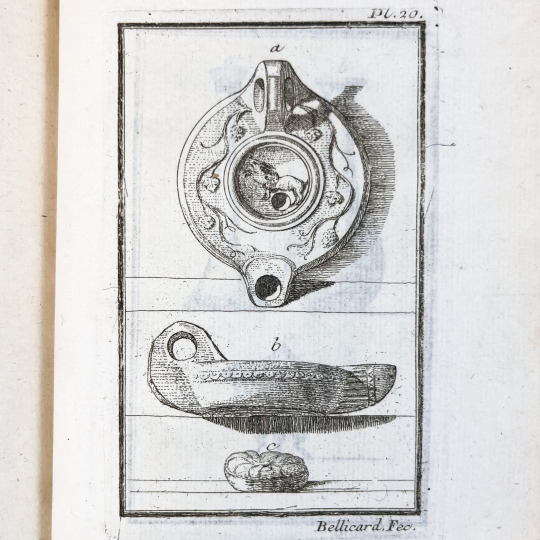
The top and profile view of an earthen lamp as well as a loaf of bread (figure C at the bottom), which Bellicard describes as “one of the greatest curiosities of that unfortunate city, for, although blackened, it hath not lost its shape, nor the impression of the letters upon its top.”
Want to learn more? Check out Bellicard’s manuscript notebook, which has been digitized in full by the Metropolitan Museum of Art.
Images from:
Bellicard, Jérôme Charles. Observations upon the Antiquities of the Town of Herculaneum. London: D. Wilson and T. Durham, 1753 [i.e., 1754]. Catalog record: https://bit.ly/3WzjkpO
112 notes
·
View notes
Text
Dress for a day
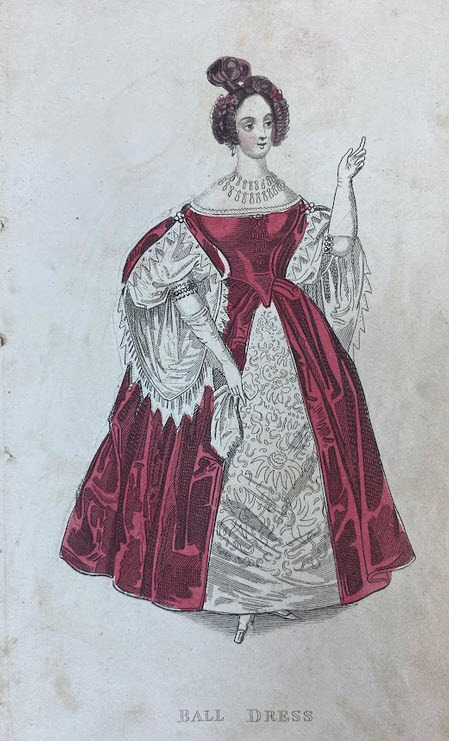
Some of us may have already changed out our wardrobe from winter to summer and are desperate to get those fold lines out of those linen trousers or fluff out that favorite sundress. Though working in a rare book and special collection, we always have a pullover or jumper on hand. Regardless, today we are discussing June and June 1st happens to be “wear a dress day” and in the realm of modern fashion, dresses are not just bound to ladies anymore!



The month of June may be best known for being named after the Roman goddess Juno (also known as Hera). Depending on where you live, June marks the official beginning of summer for the northern hemisphere with the Summer solstice. For southern Hampshire, it is the beginning of winter and the winter solstice. So, whether you are airing out summer or winter dresses, the first is dedicated to dresses for all occasions. The dress can be a simple or complex garment, as well as, formal or casual; but the garment associated with being a dress has been traced back to Egyptians. This particular garment has been traced back to five thousand years and is called the Tarkhan dress which is made of simple linen. The earliest and oldest example of the Tarkhan dress was found in the early 1900s during a tomb excavation and was bundled up with other fabrics that went unnoticed until 1977 when the floor-length shirt was unfurled from this bundle. The description is similar to the simple shift worn under complex attire. The thin linen shift would protect the skin from the rub of corsets and hoop skirts as their popularity grew in fashionable society.
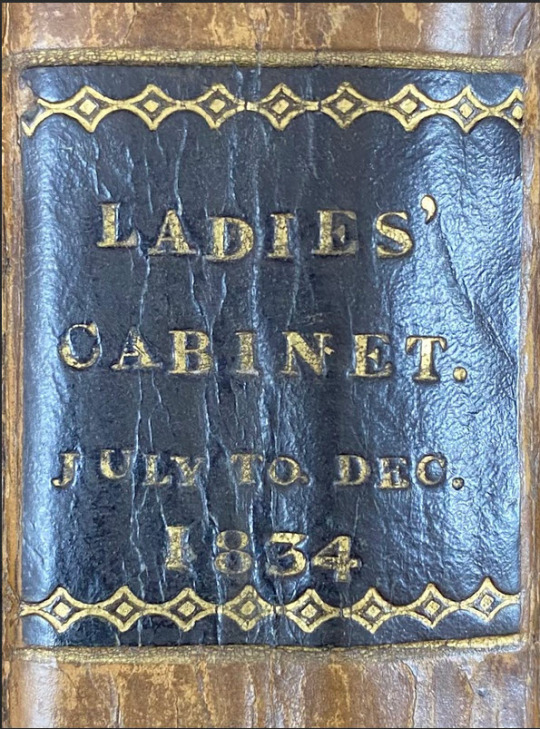
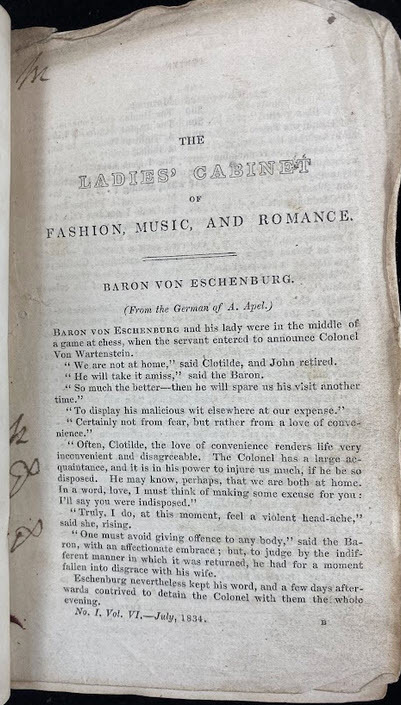
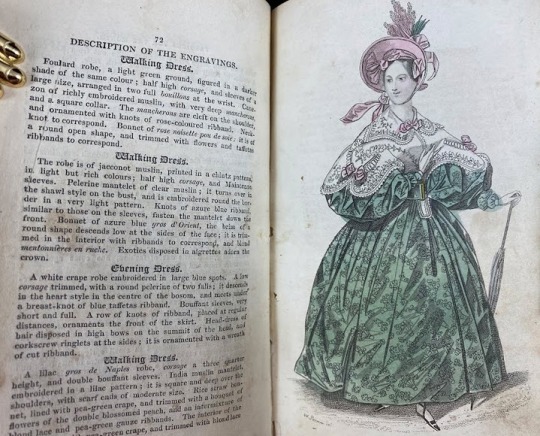
The item from the James Smith Noel Collection being featured for this post features hand-colored plates from a lady’s magazine. The Ladies’ Cabinet of Fashion, Music and Romance (https://bit.ly/3MJtcZv) was printed out of London, England as a small monthly serial series that featured romance stories, poems, and French fashions. The reception of the plates from an artistic lens were not well respected, however, the dresses featured are for the summer to winter season for all occasions which are labeled. The fashions of 1835 differ greatly from the earliest fashions of Egypt and also the fashions of today. We have shed the layers of the garment of yesteryear and introduced the lady’s trousers and even men can wear a dress. Fashion is ever changing and repeating with society.

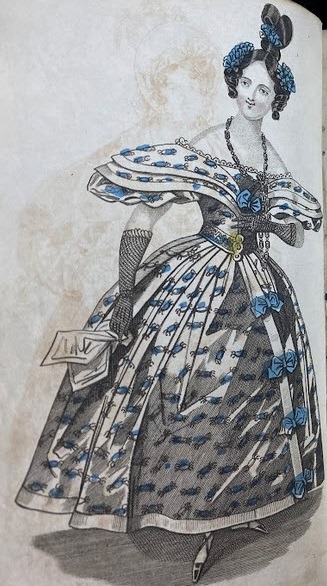
61 notes
·
View notes
Text
Seventeenth-Century Pocket Book

Today, approximately 30 currencies are in use among the fifty nations of Europe. Back in the 1600s, things were much more complex, as illustrated in this Dutch catalog of woodcuts of 1,685 coins (many scaled to actual size). European cities, duchies, dioceses, and other localized governing bodies issued their own unique sets of coinage.

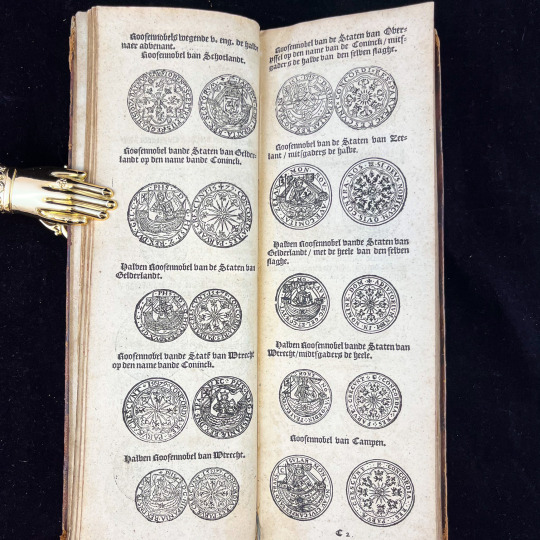

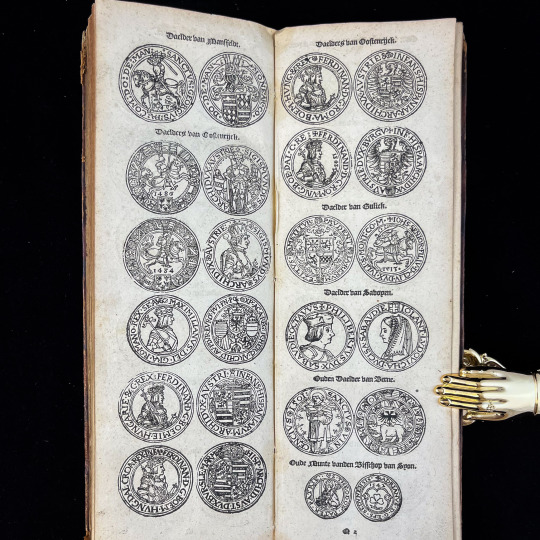
This book was printed in 1633 by Hieronymus Verdussen of the Verdussen publishing dynasty in Antwerp. At this point in history, the Netherlands dominated international trade. During the "Dutch Golden Age," the Netherlands was enriched by the establishment of the Dutch East Trading Company in 1602 and the Dutch West Trading Company in 1621. A pocket book such as the one showcased here would have seen heavy use by Dutch merchants needing a handy reference work to distinguish the hundreds of different coins in circulation.
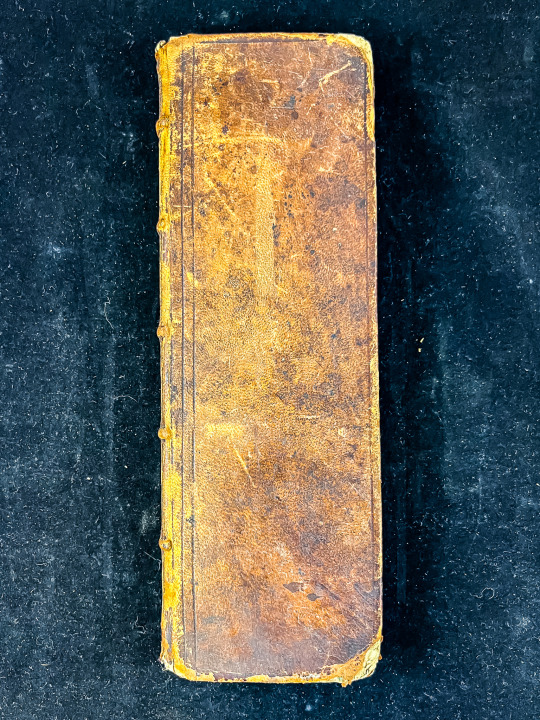
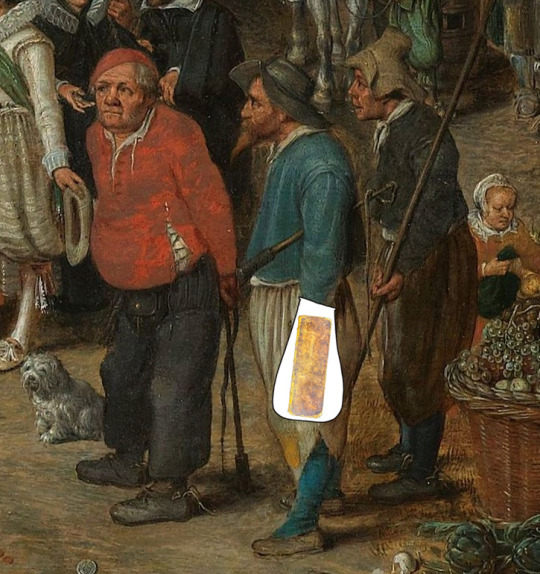
And yes, this is indeed a “pocket” book! The unusual dimensions of this volume (31 x 10.5 cm) fit very well in the pockets of the early 17th century (abt. 40 x 30 cm). (Fun fact: the modern pocket as sewn into clothes was developed in 17th century Europe!)
Images from: Ordonnancie ende instructie naer de welcke voort-aen hen moeten reguleren die ghesworen wisselaers ofte collecteurs vande goude ende silver penningen. Antwerp: Hieronymous Verdussen, 1633. Catalog record: https://bit.ly/3IAMeA8
Van de Venne, Adriaen Pietersz. Prins Maurits en Frederik Hendrik op de paardenmarkt van Valkenburg. Oil on panel, 1618. Currently held by the Rijksmuseum.
125 notes
·
View notes
Text
Summer & Strawberries
There are many things that come to mind when the word “summer” is said for everyone. It may be cookouts with family, days at the pool-side with friends, or not having to go to school for several glorious weeks. There are also the holidays that mark the beginning, middle, and end of Summer which are normally themes in red, white, and blue. So, how many people think of strawberries?
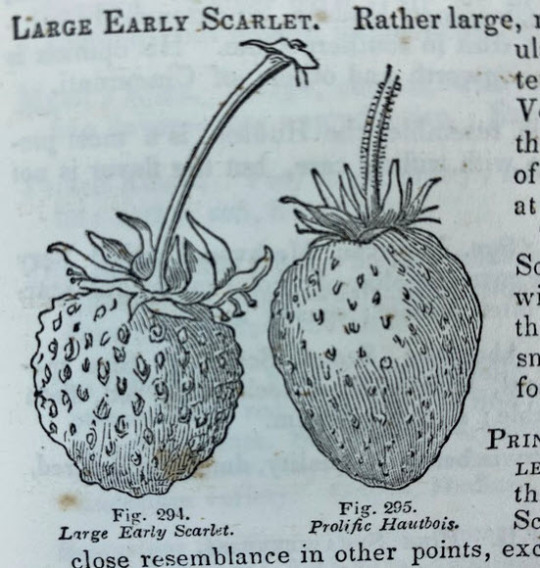
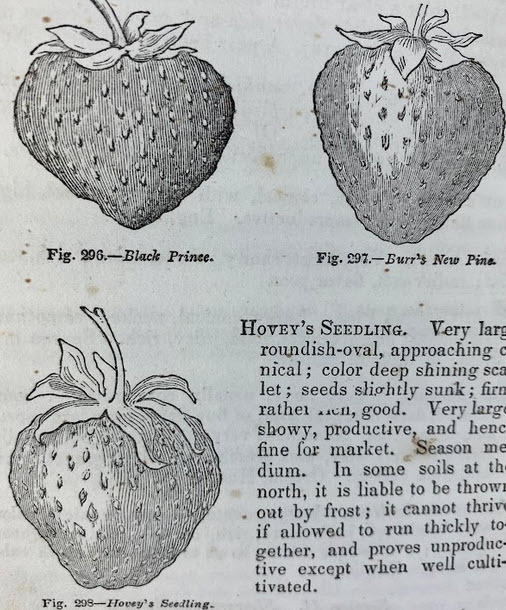
There is a select day especially for picking strawberries and it is May 20th, which is also Armed Forces Day. However, we recognize our nation's service personnel at a later date. Today we are discussing a little hybrid species of fruit. Strawberries first came into existence in the late 18th century in Brittany, France. At least the common garden strawberry did, there is also a wild species of strawberries. The fruit we use in our pound cake was cultivated from breeding the Virginia strawberry or mountain strawberry (Fragaria virginiana) from eastern North America and the Chilean strawberry or beach strawberry (Fragaria chiloensis). When the Spanish first observed the growth of the female Chilean strawberry in 1551, they brought it over to Europe where it flourished but did not produce fruit. It was not until the mid-18th century that when the Chilean variety was planted between rows of musk and mountain strawberries that it produced an abundance of large fruit. This resulted in a series of scientific discoveries regarding plant-breeding methods. The resulting strawberry, Fragaria ananassa, was named by Antoine Nicolas Duchesne due to its similarity to the pineapple with the larger strawberries’ shape, smell, and taste.

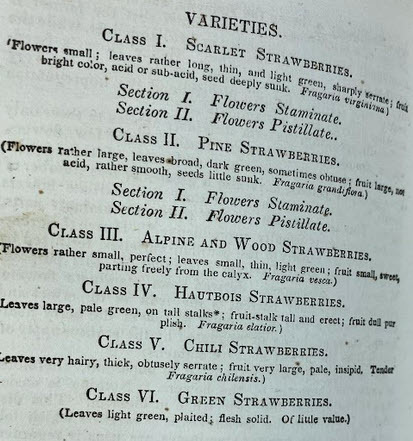
For this litter post, two books were chosen which deal with the growth of the ruby fruit. The oldest of the two is from 1934 and contains a chapter regarding the strawberry; The new American gardener; containing practical directions on the culture of fruits … by Thomas Fessenden (https://bit.ly/437S6IU). The second text is from 1850 and has illustrations of strawberries, which are dispersed throughout this post. The American Fruit Culturist … by John J. Thomas (https://bit.ly/3WsspR7) contains various descriptions and illustrations regarding fruit trees grown in planet nurseries, orchards, and gardens.
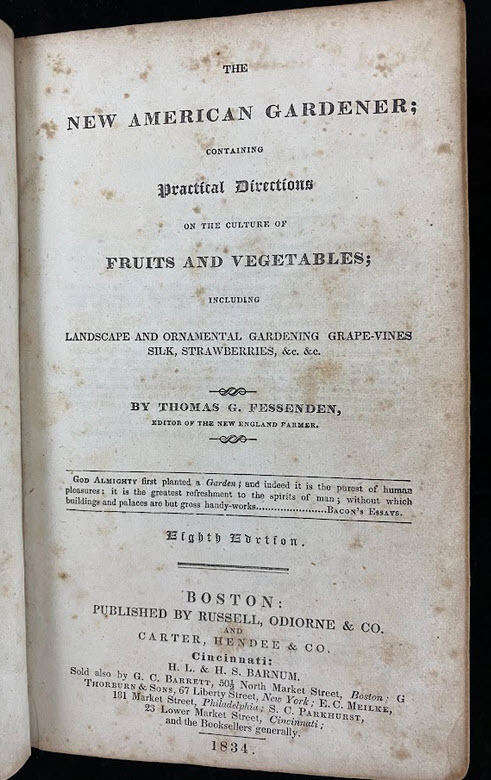

53 notes
·
View notes
Text
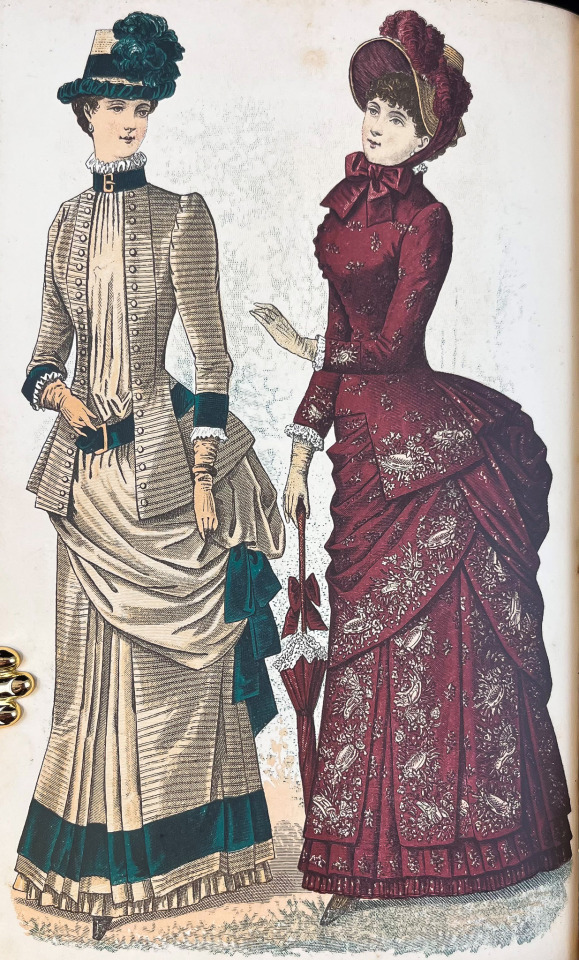
Happy Fashion Friday! This color plate represents the latest (as of May 1884) and greatest in summer fashion.
The outfit on the left is a “house dress made of plain and woven broche Arcadia velveteen; the underskirt is made of the woven broche, the polonaise of the plain goods, with vest of the woven broche.”
The dress on the right is a “[v]isiting costume. The dress is composed of two shades of pigeon-gray surah and Arcadia velveteen; the skirt is kilted, the kilts being formed alternately of the surah and velveteen. The overskirt is of the surah. Wrap of woven broche Arcadia velveteen, trimmed with chenille fringe and ornaments. Gray straw bonnet trimmed with ribbon, and deep pink feathers.”
Image from:
Godey’s magazine. New York: Godey Co. Vol. 108, no. 647 (May 1884). Catalog record: https://bit.ly/3zaKfvh.
121 notes
·
View notes
Text
Frogs & Twain
Some of us may have childhood memories of playing a game of leap-frog or reading the adventures of Mr. Frog and Mr. Toad; but did you know there is an official frog jumping day? This week not only celebrated the motherly figures in our lives but it was Frog Jumping Day Saturday, May 13th.
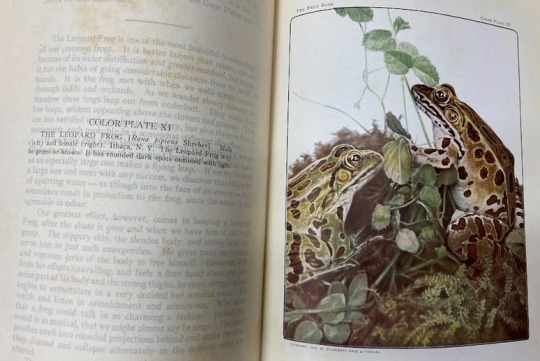
The origin of this unique little day steams from a short story by Mark Twain, “Jim Smiley and His Jumping Frog” was first published in 1865; though the more common title is “The Celebrated Jumping Frog of Calaveras County,” but there is a third title associated with this short story: “The Notorious Jumping Frog of Calaveras County.” This short story is considered to be Twain's first success as a writer, to which he would be later accused of plagiarism from an older Greek variation and Twain claimed it was a true case of history repeating itself and his story would be later referenced in a Greek textbook in the early 1900s. The story was also translated into French and then Twain retranslated “The Celebrated Jumping Frog of Calaveras County” back into English. Twain’s opinion of the French language was not a kind one. The date of May 13th has no known correlation to Mark Twain’s life but there is an annual frog jumping competition that began in 1849 in Calaveras County, California. It is also interesting to note that the international date for frog jumping is February 19th.


This time we are featuring two items from our collection. A 1930s publication featuring Mark Twain’s frog-centered short story with its original title and scientific book detailing different frogs. The Favorite Works of Mark Twain (https://bit.ly/42nqfUX) contains a short story which starts with a man seeking an old acquaintance named Leonidas W. Smiley. However, the tale the seeking friend ends up with is a different Smiley. Jim Smiley was a gambler and had a pet frog named Dan’l Webster. Jim claims his frog can out-jump any frog in the county and he is challenged by a stranger with a bet. However, the challenge was fixed to Jim Smiley's disadvantage. And the narrator is left with no positive information on his old acquaintance.

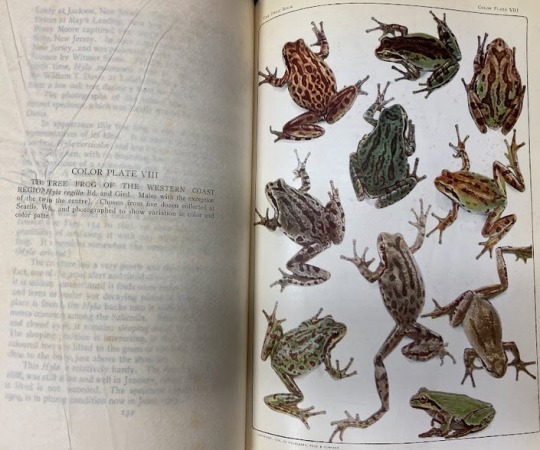
The Frog Book: North American toads and frogs with a study of the habits and life histories of those of the northeastern states by Mary Dickerson (https://bit.ly/3phffKc) features illustrations and photographs of various frog species of North America. The Frog book contains several color plates of various frog species which have been selected for this post. The frontispiece is charming as well with its colored plate of a flora and a little white tree frog.
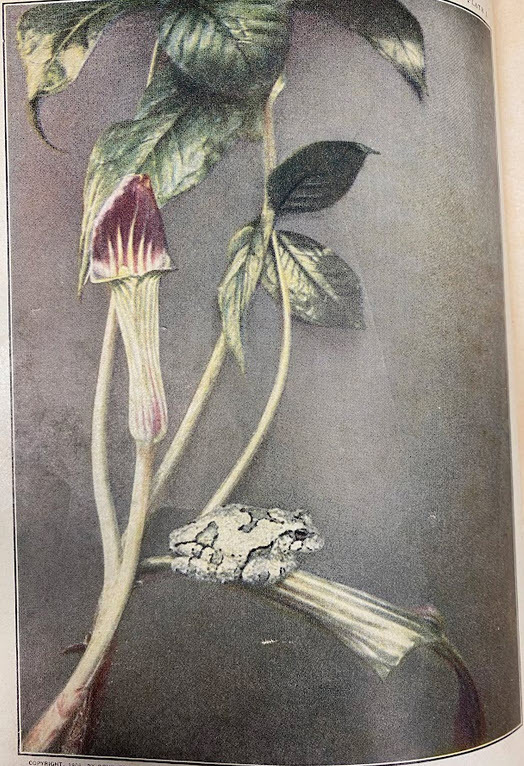
Also, did you know that there is lore of a frogman/people cryptid in Loveland, Ohio? So, how can you celebrate Frog jumping day for next year? You can jump like a frog, read a frog themed book, or wear a frog printed top.
31 notes
·
View notes
Text
May & Mother's day
The month of May can be associated with the end of the academic year and start of summer cookouts. It is also the month of mental health awareness, Jewish heritage, and national clean air month. May is also named after one of the Greek fertility goddesses, Maia. Though early May is also known for an honorary weekend called Mother’s day.
This is an American holiday that began in the 20th century as a special service of worship at a Methodist Episcopal Church in West Virginia. However, there have been other cultural celebrations of the title “mother” and the concept of motherhood. An earlier variation of mother’s day can be traced to the Greek deity Rhea, the cult of Cybele, and the Roman festival of Hilaria. These earlier traditions and celebrations were marking revitalization and bringing forth life. The modern perception of the Americanized holiday is often considered to be too commercialized. The advent of Mother’s Day was originally known as “Mothering Sunday” as a way to give a broader definition to the world.
The first mother’s day service was held in 1907 and organized by Anna Jarvis; it would be also adopted by the United States until 1920 when greeting card companies, like Hallmark, began to produce cards for the occasion. Jarvis would then organize boycotts for Mother’s day because of its commercialization, claiming that gifts and tokens meant to honor motherly figures should be handmade. Jarvis would later be arrested for disturbing the peace with her speeches and protests in 1925.
The notion of a special day to honor motherly figures of one’s life did not fall to the wayside but rather it grew and was adapted by other cultures in modern times. However, the occasion is not always observed on the second Sunday of May. The Eastern Orthodox tradition and also the United Kingdom, celebrate Mothering Sunday as being the presentation of Jesus Christ to the temple (this is February 2nd on the Julian Calendar). Many Catholic countries have reserved the occasion as Virgin Mary Day. While other countries simply observe International Women’s day, like Russia.
There is no denying that all people deserve respect and to be honored on a special day, this is typically done on birthdays, anniversaries, and now major holidays. However, what kind of material could the James Smith Noel Collection maintain for an occasion like Mother’s day? There are various famous mothers throughout history that have been written. Though it is not the mothers of history that we are showing today. To honor the concept of mothers, mothering, and motherhood, we are showing a sermon. After all, American mother’s day was started as a special religious service. The document is 16 pages long which boasts of her son’s devotion to her because of what a devoted mother she was to her son. The eulogy would have been read aloud before the collection of people that knew Judge Story and his family. There is a brief explanation of who Judge Story’s mother was just past the title page. She was born as Mehitable Pedrick and was the second wife of the surgeon Elisha Story who participated in the Boston Tea Party. Her son, her oldest child, was Judge Joseph Story and served on the supreme court during James Madison’s administration. Metitable only outlived her eldest son by two years after his death.

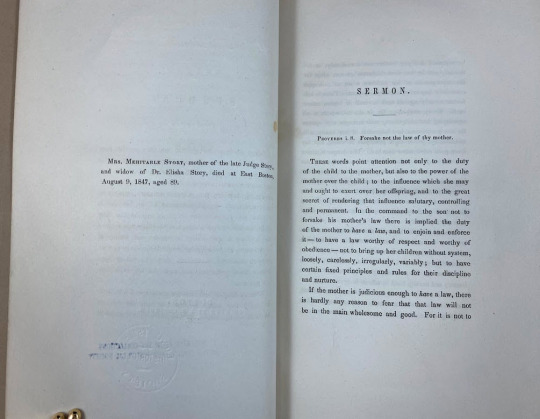
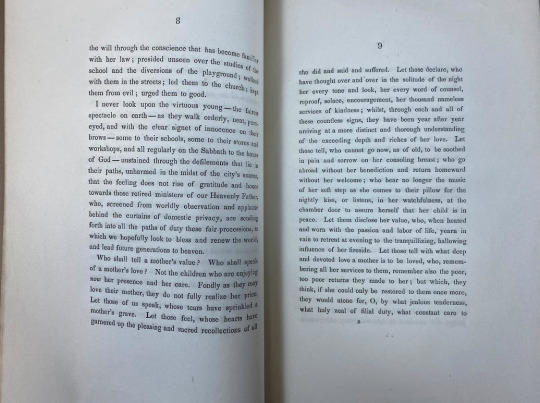
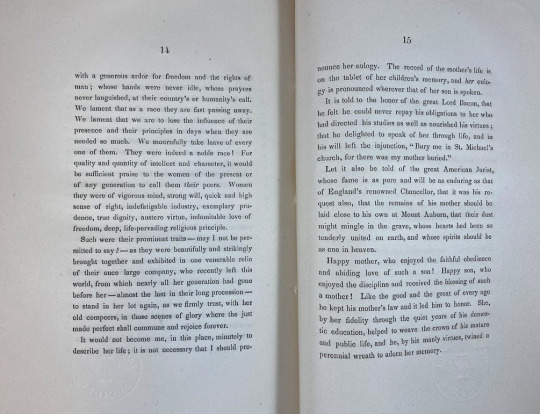
The Mother’s Law: a token of respect to the New England mothers of the last century, a sermon occasioned by the death of the mother of the late Judge Story, by Chandler Robbins was published in 1847 (https://bit.ly/3HyagLt).
20 notes
·
View notes
Text
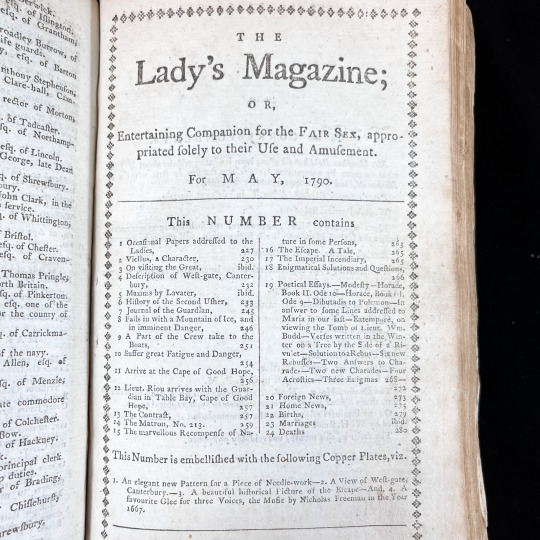
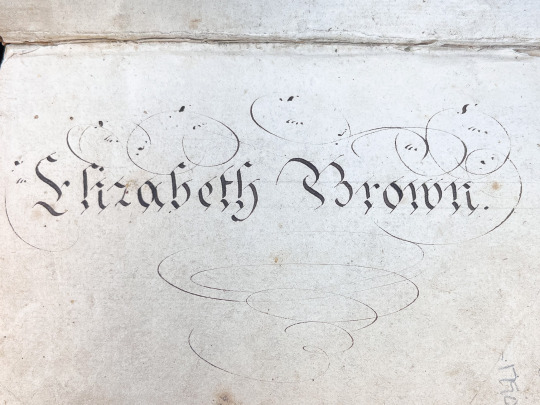
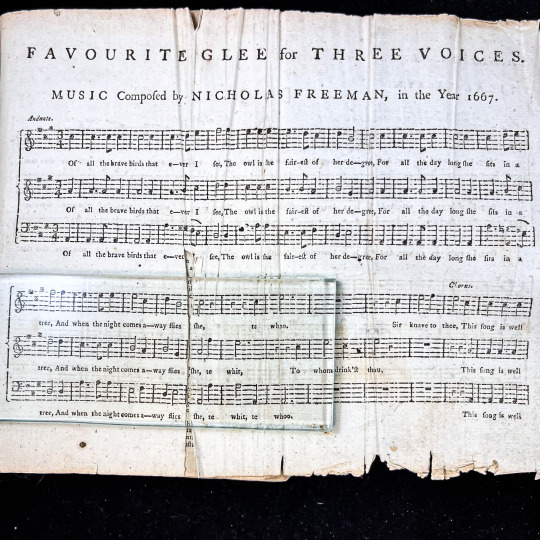
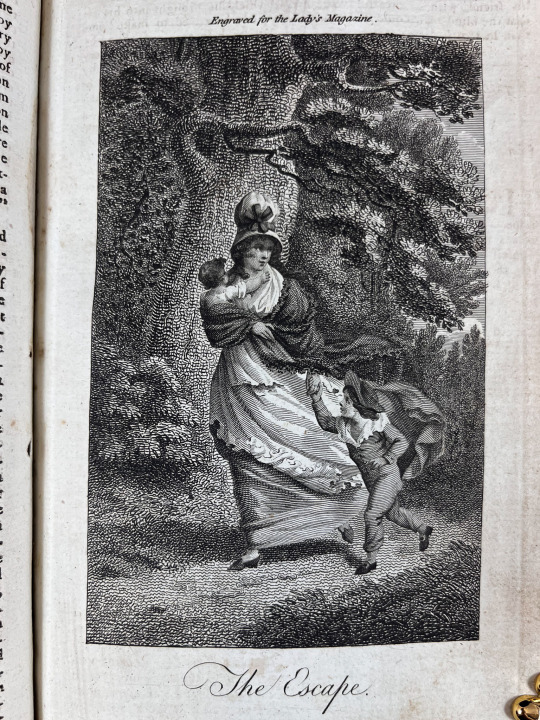
The Noel Collection has recently acquired a volume of the Lady’s Magazine containing the issues from Jan. 1790 to Jan. 1791! We hope you enjoy the calligraphic inscription of a previous owner as well as some highlights from the May 1790 issue.

Calligraphic inscription of Elizabeth Brown, a former reader of this book!

An engraving illustration titled “The Escape,” showing Maria and her two children on their way to escape an murder plot devised by Fanny Freeman, her lover’s vindictive wife. The accompanying text reads:
“...it was necessary for her to pass through a wood. The point she had in view employed her mind too much to let her think of interruptions from any monster, in the shape of men, during her progress through it. Yet she could not help stopping, now and then, and looking about her; and sometimes starting, when she heard a rustling noise, occasioned by the brisk blowing of the wind over the trees…”

A glee in tribute to the owl, in three-part harmony.
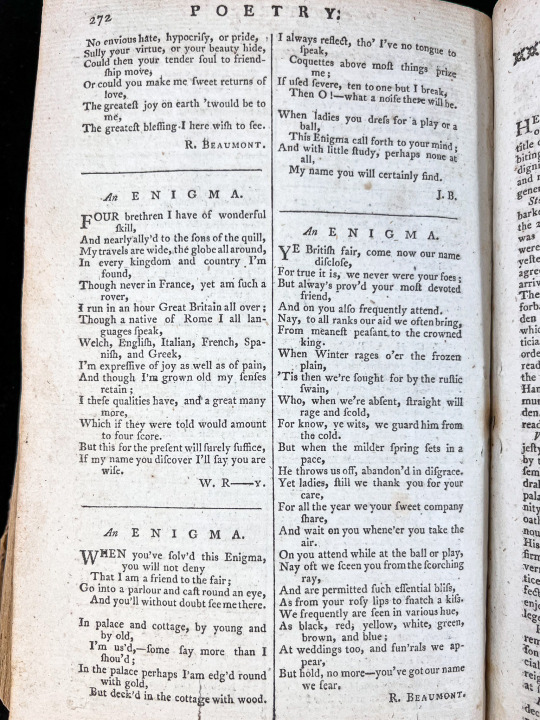
Several poetic riddles (unfortunately without an answer key).

An exhilarating recounting of the great Victualling Office fire on April 10 at Plymouth. A pile of thousands of bundles of brushwood ignited, and it took four engines two hours to put it out.
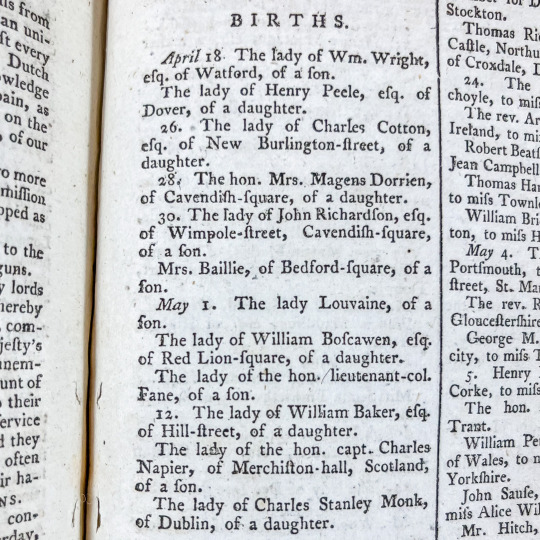
Birth notices, including that of Sir Thomas Erskine Napier (son of Captain Charles Napier), who would go on to serve in the British Army’s 52nd Regiment of Foot during the Napoleonic Wars.

Last but not least, the notice of the passing of Henry Joseph Dabzac, the Irish academician who taught Mathematics, Greek, History, and Law before concluding his life as a principal librarian at Trinity College Dublin.
Images from:
The Lady's Magazine. London: Robinson and Roberts, May 1790. Catalog record: https://bit.ly/3nLKrkB
70 notes
·
View notes
Text

An admirable eighteenth-century attempt to portray the American alligator. However, one must ask, did the artist really believe the reptile’s tail curls like a pig’s, or were they working with limited engraving space?
This illustration accompanies a comprehensive four-volume description and analysis of the Americas authored by Rev. William Winterbotham. The British Baptist minister wrote this text while serving a sentence in Newgate Prison for preaching a sermon in 1792 that was deemed too favorable to the anti-monarchical rebels of the French Revolution. As far as we can tell, William never actually visited the lands he described, but his son John did immigrate to Connecticut, and John's daughter, Ann Sophia Stephens, became a noted American writer and progenitor of the “dime novel” genre.
Image from:
Winterbotham, William. An Historical, Geographical, Commercial, and Philosophical View of the American United States and of the European Settlements in America and the West-Indies. London: J. Ridgway and H.D. Symonds, 1795. Vol. 1. Catalog record: https://bit.ly/3pbKwhu
209 notes
·
View notes
Text
April showers bring May flowers… and the end of April brings a close to poetry month. A story can be told in various forms, through verse, prose, epistolary, and solely through images. Illustrations can give visuals for difficult literary imagery or they can be the sole narrative form of a work.
The James Smith Noel Collection is currently displaying various works of poetry featured from Homer to E.E. Cummings. Some of these publications have marvelous illustrations and etchings that provide readers with deeper understanding of literature. In the case of one particular work, we are showing an edition of Beowulf which is an epic poem. Beowulf holds a special place in literature and in English history, since it was one of the earliest recorded poetical works of the English language. While this edition has been translated from its original old English for easier reading, it is also an illustrated edition. The epic poem has been translated and adapted numerous times over. This particular edition is from the late 1930s and is illustrated with woodblock prints in a blended style of Art Deco and Expressionist.
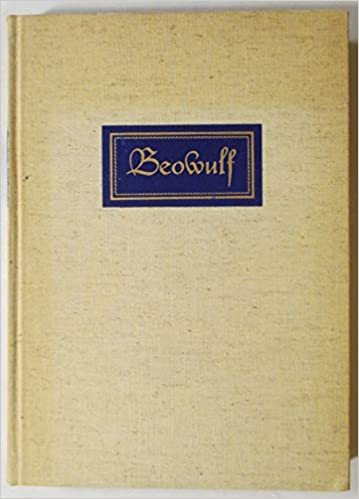

The artist for this edition is Lynd Ward who lived from 1905 to 1985 and he was an American artist and novelist. He was known for his series of wordless novels for juveniles and adults that would influence the creation of the graphic novel. His print works included more than just woodblock prints but also used watercolors, oil, ink, lithography, and mezzotint. He suffered from tuberculosis in his early life and throughout much of his childhood. He took to drawing and art from an early age; and it is said that he told a teacher that “Ward was draw spelled backwards.” When he was in high school he was the art editor for the school paper and yearbook where he was exposed to linoleum-block printing. He remained dedicated to art and studied at Columbia Teachers College in New York. After graduating he went to Europe and attended the National Academy of Graphic Art and Bookmaking in Germany as a special-one-year student. He learned etching, lithography and wood engraving. Ward learned wood engraving from Han Alexander “Theodore” Muller, and was deeply influenced by Muller. It was during that time in Leipzig, Germany that he encountered two wordless novels, one by the Flemish artist, Frans Masreel and the other by Otto Nuckel. Masereel’s wordless novel The Sun (1919) featured a story told through 63 woodcut illustrations. Otto Nuckel’s Destiny (1926) which was illustrated with lead-cut engravings with a darker and naturalist narrative.
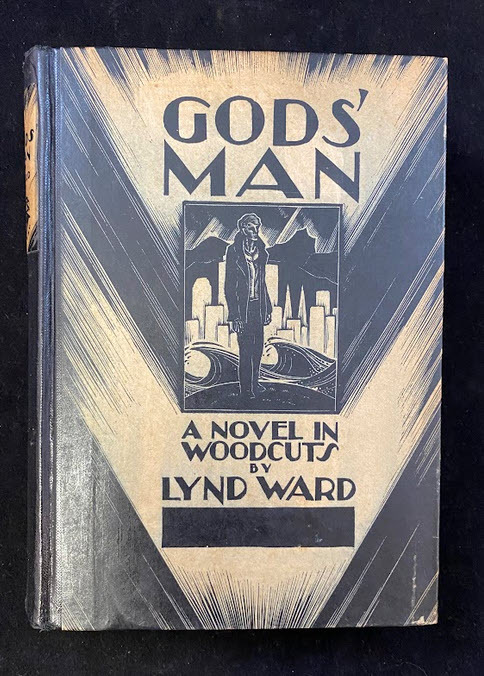
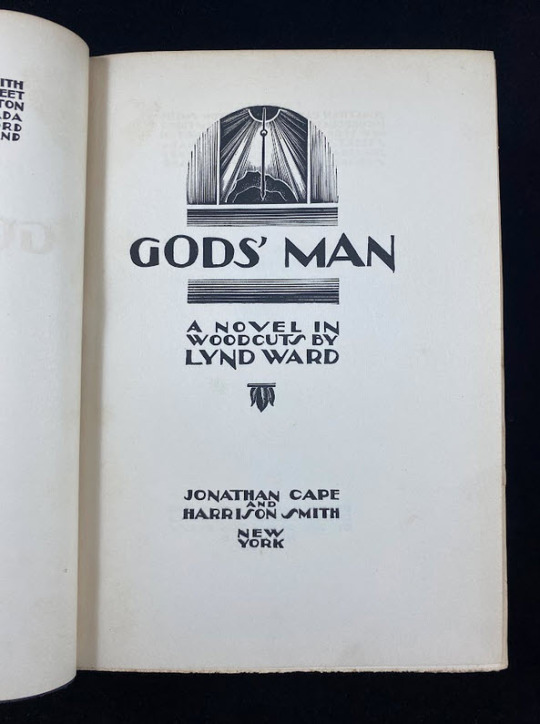
Ward returned to the states in the autumn of 1927 and showed his portfolio to a number of editors, was commissioned by Dorothy Rowe in 1928 to illustrate The Begging Deer: and other stories of Japanese Children. Ward illustrated several other works until 1929 when he created his first woodcut illustrated novel and the first American wordless novel, Gods’ Man in October of 1929. The James Smith Noel Collection also holds a copy of Ward’s novel Gods’ Man (https://bit.ly/42lQhrB).



The illustrator for our 1939 edition of Beowulf is not the only interesting contributor to the literary canon, the translator for this edition is William Ellery Leonard. William Ellery Channing Leonard was born in 1876 to parents that admired the transcendental literary movement. He was named after the mentor of Ralph Waldo Emerson, William Ellery Channing. Leonard had an nontraditional education, attending as a student in his mother’s class for 5 years and then home-schooled by his father until the age of nine. He took up a job as a door-to-door salesman out of high school due to frustrations at not being able to afford college to further his passion for literature. By happenstance, he accidentally ended up at the College of Liberal Arts at Boston University when seeking to visit the Massachusetts Genealogical Society because his guidebook had the wrong address. The venture resulted with Leonard being offered a tuition scholarship from the dean of the college. He would go on to write over 200 poems while in school and publish in Century Magazine in 1899. He graduated with a B.A. from Boston University and then moved on to Harvard University for a masters. He completed his masters in a year and a temporary professorship. He maintained a successful education and literary career, he also produced numerous volumes of poetry.
Leonard spent his life struggling with agoraphobia, which resulted in decreasing radius until he would host academic lectures in his home. He was briefly married to the daughter of his landlord and then later to a student. His personal struggles are reflected in his poetry. His death was commented on by a newspaper as being what freed him from his “phobic prison.”
Leonard also wrote scholarly commentaries on Aespo, Empedocles, Luretius, and Beowulf. The edition on display in the James Smith Noel Collection is fully titled as Beowulf: translated into verse by William Ellery Leonard and illustrated by Lynd Ward (https://bit.ly/41KZvNU) published by Heritage Press in 1939. The edition is illustrated with black, blue and light-brown woodcut prints, the illustration on display for the J.S. Noel Collection’s current exhibit is of when Beowulf is battling the sea-hag or water-witch that was Grendel’s mother in an underwater cavern. The Danish-hero struggles against foe and then finds a sword at the bottom of the cavern, the sword is the key weapon for defeating Grendel’s mother.

21 notes
·
View notes
Text

Happy Birthday to Scottish astronomer James Ferguson! To celebrate, we’re showcasing our first edition copy of his The Young Gentleman and Lady’s Astronomy (1768).
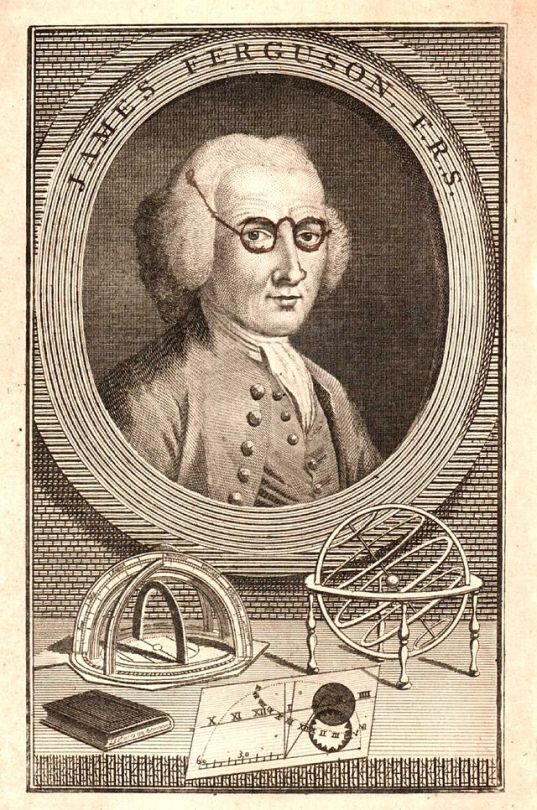
James Ferguson was born on April 25, 1710, to a poor farm laborer and his wife in Rothiemay, Scotland. While working as a farm laborer himself, young James’ gaze turned to the night sky; he mapped the stars by lining them up with beads on a taut string and then marking the beads’ positions on paper. Ferguson worked as a clock cleaner and portrait artist before his career as a scientific lecturer took off. He became renowned for his talent of elucidating complex scientific phenomena so that even a child could understand the wonders of the natural world. In the 1760s, King George III granted him an annual pension, and he was elected a fellow of the Royal Society–not bad for a poor Scottish shepherd with only three months of formal education.
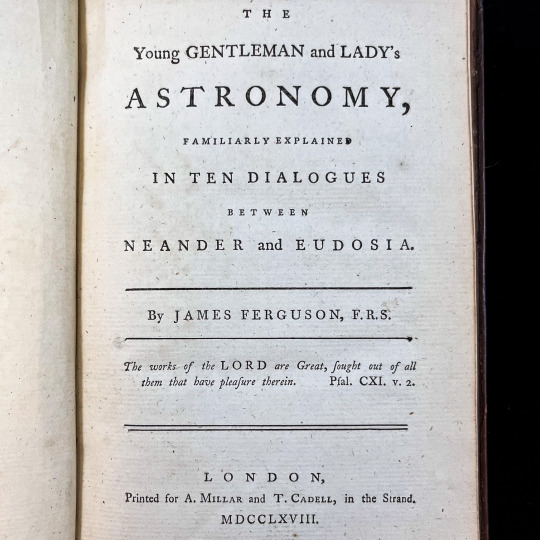
The Young Gentleman and Lady’s Astronomy teaches the basics of astronomy using a dialogue between brother-sister duo Neander and Eudosia. Neander has just come home from his studies at Cambridge, and Eudosia wants to ask him questions about experimental philosophy but expresses some reluctance due to the stigma of women interested in science. Neander tells her to ignore the haters and ask him anything, and from there Ferguson guides the reader through discussions of planetary motion, gravity, tides, and eclipses.
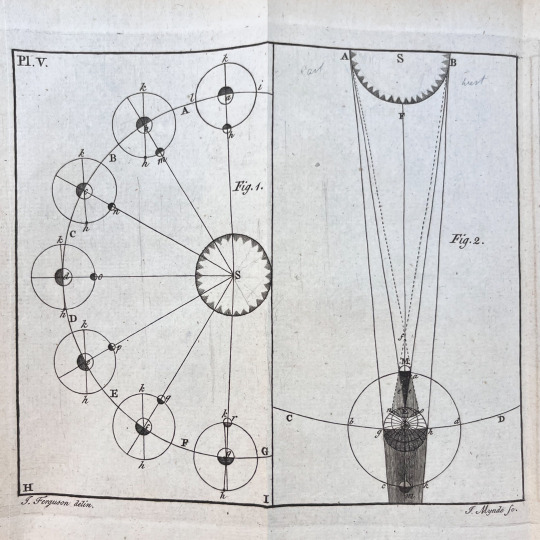

Images from:
Ferguson, James. The Young Gentlemen and Lady’s Astronomy. London: A. Millar and T. Cadell, 1768. Catalog record: https://bit.ly/41ybNZY
James Ferguson (1710-1776). Public Domain.
23 notes
·
View notes
Text
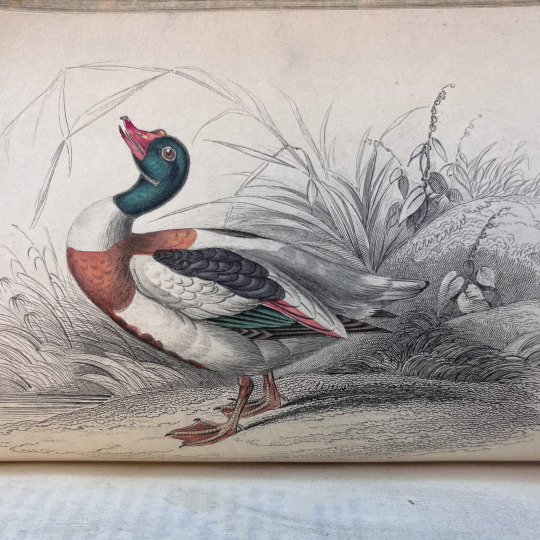
Things are looking up–way up–for this Common Shelduck!
The Common Sheildrake, as Jardine calls it, is a favorite maritime avian that excels in caring for its young:
“In the full adult state of this bird, from the decided markings of clear white, reddish orange, and black, it is one of our most beautiful and clean-looking ducks…When the young are hatched, they are conducted to the sea, and Mr. Selby states, are sometimes carried in the bill of the parents to their protecting element. If come upon when the young are newly hatched, the old birds endeavour to lead off the intruder by feigning lameness like some of the rasores and grallatores…”
Images from:
Jardine, William. The naturalist’s library. Edinburgh: W.H. Lizars et al., 1843. Vol. 27. Catalog record: https://bit.ly/2Q98p8i
8 notes
·
View notes